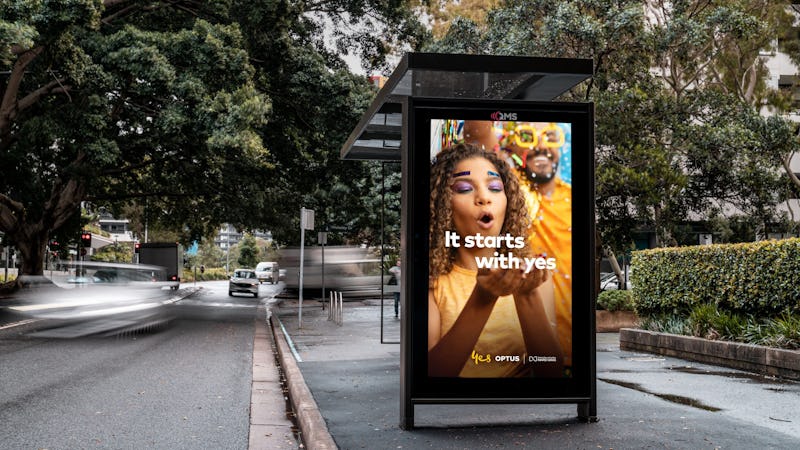
The world of programmatic advertising platforms is flourishing. These platforms, including Demand-Side Platforms (DSPs), are pivotal in this evolution. DSPs optimize advertising costs, aiming for low Cost Per Mille (CPM) rates while ensuring quality ad placements. By understanding the DSP advertising meaning, advertisers can leverage these platforms effectively.
Many platforms present a multitude of features, such as real-time bidding, direct (non-RTB) programmatic buying, high-quality ad inventory, and clear-cut ad technology. Exploring programmatic ad buys, we uncover the attributes of a successful programmatic advertising platform. As the sector grows, advertisers and publishers alike are seeking out scalable and innovative solutions for purchasing and selling ads.
Deciding Between Cost per Click (CPC) or Cost per Mille (CPM) on a Programmatic Advertising Platform

Typically, Cost Per (CP) strategies are prevalent in performance marketing. Advertisers often pay solely for a click, disregarding the number of impressions a user encounters during programmatic display advertising. This method can result in a more budget-friendly cost per click in Cost per Mille (CPM) models as opposed to Cost per Click (CPC) ones. Moreover, CPC grants advertisers insight into the number of clicks generated by their ads. Now, let's delve into the top-tier advertising software provided by Supply Side Platforms (SSPs).
How Much Does Programmatic Advertising Cost?
Determining how much programmatic advertising costs can be quite complex due to the myriad of factors involved. Costs are primarily influenced by variables such as the type of media used, target audience, geographic location, and the time of year, among others. Generally, pricing models for programmatic advertising are usually based on CPM (Cost Per Thousand Impressions). The actual costs also largely depend on the level of competition for the specific target audience and the quality of the ad placements. Therefore, businesses need to plan and budget their programmatic advertising strategy carefully, considering all these elements to make the most out of their advertising spend.
Understanding the Workings of Programmatic Advertising

The mechanics of programmatic advertising are quite straightforward. An automatic calculation process evaluates the bids from competitors. Could other advertising tools within Publift assist in selecting the appropriate user?
Assessing the Costs of Programmatic Ad Platforms
The expenses associated with programmatic ads can vary widely based on the platform. Some advertising sites allow free usage but share in the profits publishers earn from advertisers. Others impose a fee on advertisers for joining.

The Advantages of Employing Programmatic Ads Platforms
Programmatic advertising platforms boast numerous benefits and scalability. They offer immediate access to hundreds of publishers worldwide, enabling you to reach any audience of your choosing. Roughly 95% of marketers employ programmatic advertising methods. As of 2020, over a third of all digital ad revenue was attributed to programs. Reaching all these websites manually would have taken years, but with programmatic advertisements, the process is real-time.
Introducing War Room
War Room amalgamates advanced programming and data insights to deliver a spectrum of advertising services including search, display, social, video, ad, audio, and shopping. They cater to a broad spectrum of advertisers, ranging from massive corporations to smaller entities.

Spotlight on DSPs in 2023
The year 2023 will witness several leading platform development programs. The following list proposes some of the best programmatic ad providers for executing programmatic ad campaigns.
Exploring Demand-Side Platforms (DSPs)
DSPs enable advertising agencies to bid for an increased volume of clicks from publishers. They allow advertisers to segment their audiences by specific characteristics, such as age and location. Let's explore some prominent DSPs:

Unveiling Adobe Advertising Cloud DSP
Adobe Advertising Cloud DSP prides itself on being a top-tier Omnichannel DSP supporting connected television, video, display native, audio, and search campaigns. Adobe offers a comprehensive suite of services, including inventory management, personal marketing, and searching. Pricing varies depending on several factors, including company size, requirements, and the number of tools purchased. Supported ad inventory includes display, video and audio, mobile applications, Digital out of Home (DOOH), television, native, and social.

Utilizing a Demand-Side Platform
DSPs were designed to automate and optimize programmatic ad buying processes, allowing programmatic campaigns to achieve desired performance metrics. For more insight into DSPs, we recommend reading a brief overview of their functions. DSPs equip you with all the essential tools you need.
Understanding Ad Exchanges
Ad Exchanges serve as intermediaries chosen by advertisers. Publishers resort to Ad Exchanges to create ad impressions, which are then presented to advertisers for bidding. This article lists the most successful ad exchanges currently in the market.
Ad Exchanges: Powerhouses of the Digital Advertising Ecosystem
In the rapidly evolving digital advertising ecosystem, the biggest ad exchanges have emerged as vital platforms connecting publishers with advertisers. These ad exchanges, including giants like Google's DoubleClick, AppNexus, and The Trade Desk, facilitate programmatic buying and selling of online ad inventory, thereby streamlining the ad placement process. They operate much like a stock exchange, but instead of trading stocks, they deal with space on websites, mobile apps, and other digital platforms for ads. Through real-time bidding systems, these ad exchanges ensure a seamless, efficient, and transparent transaction, helping businesses reach their target audience with precision and speed. Their continued growth underlines the increasing importance of digital advertising in today's digitally-driven world.
Emphasizing the Importance of Self-learning and Up-to-date Programmatic Platforms
Programmatic software leverages artificial intelligence and self-learning algorithms to discern patterns necessary for decision-making. Smarty Ads' clickability analysis tool evaluates the clickability of each site based on past experience, helping to identify the source that offers the highest level of clickability for advertisers.
Deciphering the Role and Function of Programmatic Advertising Platforms
Programmatic advertising platforms are engineered for the automated buying and selling of media. Each platform is part of a programmatic ecosystem. The following image illustrates the interaction between the three ad networks: Advertisements can bid on DSP Auctions in real time. The highest bid secures the advertising slot (ad impressions served). But how can we utilize DPM?
Exploring Google Ad Manager
Google Ad Manager monetizes content via its supply side. Almost a quarter of ads are delivered through Google Ad Manager, making it an effective partner for engaging with your audiences online. Google Ad Manager is a fantastic tool that simplifies ad setting and serving, providing a great resource for data analytics, but it may not always provide the best value.
Tuning Your Ad Campaign
DSPs allow advertisers to define how their advertising campaigns will appear (display ads, video, native ads, banners, and CTVs) and to choose different formats for various programmatic campaigns. An additional strategy to make your ads noticeable to viewers is to limit your ad display time.
Understanding The Trade Desk
The Trade Desk is an ad marketplace enabling publishers to sell targeted ads to advertising partners globally. It is an efficient platform for collecting, managing, and storing information all on one page. The Trade Desk employs a model that helps advertisers boost their sales and offers a high level of audience access through its extensive network data services.
Understanding Data Management Platforms (DMPs)
DMPs, although not frequently used for advertising, hold equal significance. They enable advertisers to collect varied information to assess if their ad campaigns have reached the desired audience. DSPs automatically bid for ads in the market, but to ensure that the purchased advertising reaches the correct demographic, these services use information gathered from DMPs. On the other hand, publishers use DMPs on their websites for storing and analyzing data. This article lists the most popular DMPs in the market.
What Qualities to Look for in a Platform in 2023?

Choosing a programmatic advertising platform can be challenging given the diversity of vendors each with unique features, strengths, and weaknesses. The task is particularly daunting when advertising agencies use DSPs. With so many capabilities on offer, it can be easy to lose focus and prioritize less significant features. But why is using DSPs for programmatic ads so crucial?

Delving into Google Marketing Platform
Once hailed as a key leader among digital advertising platforms, Google has an impressive track record. It's particularly beneficial for programmatic search marketing, albeit a bit cumbersome. Nonetheless, it currently appears to be a solid option for a comprehensive DSP.
Introducing Improvado's UTM Dashboard for Protecting Your Marketing Analytics Remember. The Ideal Platform Should Be Omnichannel with a Variety of Ad Formats The broader the range of settings a platform supports, the greater the opportunities for advertising. SmartyAds Demand Side Platform is a programmatic advertising network that delivers traffic via digital channels and verticals, digital displays, and ads in various formats (including in-app and mobile advertising). However, its functionality extends well beyond the programmatic advertising capabilities of the platform. It offers interactive ad formats for mobile desktop web and CTV environments in addition to programmable displays (i.e., reward videos) and playable.

Campaign Optimization is Key
The crux of the matter is an intelligent self-learning algorithm. By 2022, platforms will not only automate advertising campaigns but optimize them based on performance data from previous campaigns. This includes adaptive CMPM functions in Smartads DSP. It offers a means to optimize the CPM by adjusting the bid price. It keeps the bid price competitive and attracts more customers, preventing advertisers from overpaying for ads. Moreover, a new creative autosize tool optimizes programmatic display ads for better placement in suitable ad slots (adaptable for screen sizes).

The Importance of Effective Audience Targeting
Targeting is invaluable when promoting advertising. There will be demographic targeting, interest and behavioral targeting, based on socio-economic status, and geographic targeting. There are a plethora of ad campaigns that target specific demographics. A programmatic advertising platform must offer your target audience the options they use when searching for your products or services. SmartyAds offers multiple targeting options for DSP (geo, OS, type split, age range, etc.).
What is an Ad Exchange?
Ad Exchanges are digital marketplaces that allow advertisers and publishers to buy and sell advertising space in real-time via a platform using auction technology. Data and algorithms match the best ad to the most suitable users, enabling the most efficient delivery of the best ads in the best way possible.
Decoding Supply Side Platform (SSP)
An SSP assists companies in selling ads on their websites. This platform uses automation to determine the optimal price for the ads and suggests the most qualified buyers in the market for that product. SSSPs connect publishers to a growing network of advertising partners through AdNet.com and other online media platforms. Let's examine some top SSPs.
How to Choose a DSP?
Selecting a DSP involves considering several factors such as your campaign objectives and audience. After gathering all the relevant information, explore the various DSP options and determine the best fit.

Programmatic Advertising Platforms: How They Revolutionize Online Advertising
Programmatic advertising is a relatively new concept that has gained momentum in the advertising industry over the past few years. This approach to advertising has revolutionized the way businesses target their audiences and buy ad space. In this blog post, we will explore programmatic advertising platforms, how they work, and their benefits to advertisers and publishers.

What is Programmatic Advertising?
Programmatic advertising is the automated buying and selling of ad space using software and algorithms. This technology uses artificial intelligence (AI) to analyze data about target audiences, ad inventory, ad formats, and ad campaigns. Programmatic advertising platforms enable advertisers and publishers to buy and sell ad space in real time, often through ad exchanges. Advertisers can choose their target audience, ad format, and ad inventory quality to create a customized ad campaign that reaches the right audience at the right time.
Programmatic Advertising Platforms
Programmatic advertising platforms are the tools that enable advertisers and publishers to buy and sell ad space in real time. These platforms provide access to ad exchanges, where advertisers and publishers can bid on ad space using real-time bidding (RTB) technology. Ad exchanges are marketplaces where advertisers and publishers can connect and exchange ad space.
The best programmatic advertising platforms provide advertisers and publishers with access to multiple exchanges, ad networks, and supply-side platforms (SSPs) to maximize ad inventory quality and reach. These platforms also offer data management platforms (DMPs) that enable advertisers to collect and analyze relevant data about their target audiences.
Demand-side platforms (DSPs) are another type of programmatic advertising platform that enables advertisers to buy ad space directly from ad exchanges. DSPs provide advertisers with access to multiple exchanges, ad networks, and SSPs to reach a broader audience. Advertisers can use DSPs to create audience segments and target their ad campaigns based on specific criteria such as location, age, interests, and behavior.
Supply-side platforms (SSPs) are programmatic advertising platforms that publishers use to sell ad inventory to advertisers. SSPs enable publishers to optimize their ad inventory and maximize ad revenue by connecting them with multiple ad networks and demand-side platforms. Publishers can use SSPs to set prices for their ad inventory and sell it to the highest bidder in real time.
Ad Formats and Ad Inventory
Programmatic advertising platforms offer a range of ad formats, including display ads, video ads, native ads, and mobile ads. Advertisers can choose the ad format that best suits their ad campaign and target audience. Programmatic advertising platforms also provide access to ad inventory across multiple exchanges, ad networks, and SSPs. Ad inventory refers to the available ad space on websites, mobile apps, and social media platforms.
Targeting Your Audience
One of the most significant benefits of programmatic advertising platforms is the ability to target your audience accurately. Advertisers can use programmatic advertising platforms to target their ad campaigns based on specific criteria such as location, age, interests, and behavior. This level of audience targeting enables advertisers to reach the right audience at the right time, resulting in higher engagement and conversion rates.
Dynamic Creative Optimization
Programmatic advertising platforms also offer dynamic creative optimization (DCO) technology that enables advertisers to create customized ads for each audience segment. DCO technology uses AI algorithms to analyze relevant data about the target audience and generate personalized ad content. This approach ensures that the ad content is relevant and engaging, resulting in higher engagement and conversion rates.
The Rise of Programmatic Advertising

Programmatic advertising is a method of buying and selling online advertising space automatically. It uses machine learning and AI algorithms to automate the decision-making process for targeting specific audience segments. This process has been revolutionized by programmatic ad platforms, which help in selling ad inventory and buying ad space more efficiently and effectively.
Programmatic platforms like Google Ad Manager, Adobe Advertising Cloud, and various independent ad platforms have become indispensable in the digital advertising landscape. They help manage ad inventory, deliver ad campaigns, and provide data-driven insights to improve the efficiency of ad spend.

Understanding Demand-Side Platforms and Supply-Side Platforms
In the programmatic ecosystem, Demand Side Platforms (DSPs) and Supply Side Platforms (SSPs) play a pivotal role. A demand-side platform (DSP) enables advertisers to buy digital ad inventory from multiple ad exchanges through one interface, while supply-side platforms (SSPs) allow publishers to manage, sell, and optimize their available ad space.
Google's Marketing Platform and Adobe's Advertising Cloud DSP are prominent players offering robust programmatic advertising services. They offer cross-channel programmatic campaigns, dynamic creative optimization, transparent ad tech practices, and brand safety features.

The Significance of Ad Exchanges and Data Management Platforms
Ad exchanges are digital marketplaces where advertisers and publishers trade ad space. They facilitate the buying and selling of targeted ad space in real-time. When an advertiser's bid on an ad exchange matches a publisher's asking price, the ad is instantly placed on the publisher's website, often via real-time bidding.
Data management platforms (DMPs), meanwhile, collect, analyze, and manage a large volume of structured and unstructured data. They allow advertisers to understand and segment their target audiences better, which helps them create more focused and effective digital campaigns.

Native Ads, Video Ads, and Mobile Apps: Embracing Variety in Ad Formats
Programmatic ad platforms support a plethora of ad formats. From native ads that blend seamlessly with website content to engaging video ads and interactive ads on mobile apps, the variety is vast. Advertisers can choose the ad formats that resonate best with their target audiences, ensuring their messages reach and engage the intended users.

Programmatic Marketing and Its Benefits
Programmatic marketing involves automated bidding on advertising inventory in real time, for the opportunity to show an ad to a specific customer, in a specific context. It not only accelerates the ad buying process but also eliminates the risks of human error and offers data-driven insights for better decision-making.
Programmatic ad buying is scalable, efficient, and results in higher ROI. It allows advertisers to leverage third-party data, improve their audience targeting, and access ad exchanges and ad networks.

The Promise of Programmatic Advertising Platforms
Programmatic platforms promise advertisers and publishers transparent and efficient transactions. They ensure ad quality, offer diverse ad formats, and provide real-time data insights. For businesses, programmatic ads mean better targeting, scalable and flexible innovation, and ultimately, a better return on ad spend.
Best Programmatic Advertising Courses
For individuals seeking to master the complex landscape of automated ad buying, there are several highly regarded programmatic advertising courses available. Here are a few suggestions:
- Programmatic Advertising Course by eMarketer: Known for their in-depth research and trend analysis in digital marketing, eMarketer offers a comprehensive course in programmatic advertising, which covers basics and advanced topics alike.
- Programmatic Marketing Certification by the Data & Marketing Association: This certification course is rigorous and provides a detailed view of programmatic marketing. With this course, learners can expect to understand programmatic advertising strategies and how they can be applied in real-world situations.
- Real-Time Bidding and Programmatic Advertising by IAB: The Interactive Advertising Bureau (IAB) offers this course which dives deep into real-time bidding and other essential elements of programmatic advertising. IAB is a well-respected institution in the digital advertising world, so their courses carry significant weight.
- Online Marketing Foundations: Programmatic Advertising by LinkedIn Learning: This course provides a solid foundation in programmatic advertising and is perfect for beginners. LinkedIn Learning's courses also have the advantage of being self-paced, allowing learners to take their time to fully understand the concepts.
- Programmatic Academy by AdExchanger: AdExchanger's Programmatic Academy offers a range of courses from Programmatic 101 to more advanced classes. The courses are designed to be practical, allowing learners to apply their new knowledge directly to their jobs.
It's worth noting that the "best" course can vary depending on your specific learning goals and prior experience. Some may offer a broad overview, while others might focus on specific aspects of programmatic advertising, so it's recommended to thoroughly review course outlines and objectives to find the best fit for your needs.
Understanding Digital Advertising: Programmatic Advertising vs Google Ads
When considering the landscape of digital advertising, it's important to understand the distinction between programmatic advertising and Google Ads, two significant players in the field. Programmatic advertising refers to the use of automated technology for buying and selling digital advertising, typically through a programmatic advertising platform. This process leverages data and algorithms to target specific audiences and optimizes in real time, making ad buying more efficient and precise. On the other hand, Google Ads, Google's online advertising platform, allows advertisers to target users across its extensive network, including search, display, and YouTube. For beginners or 'dummies' in the digital marketing world, it's essential to grasp that while Google Ads is a powerful tool, programmatic advertising provides a broader scope, allowing advertisers to access inventory from multiple publishers beyond Google's network and offering a more comprehensive view of customer behaviors and preferences.

Wrapping Up
Programmatic advertising platforms are undoubtedly shaping the future of digital advertising. From Google Ads to independent ad platforms, each one offers unique benefits and caters to specific needs. Advertisers and publishers must choose a platform that aligns with their goals, provides a high level of ad inventory quality, supports omnichannel ad campaigns, and upholds transparent ad tech practices.
Choosing the right platform can be a game-changer in reaching your target audience effectively, maximizing your ad spend, and propelling your business towards success in the digital advertising landscape. In a world where every website visitor is a potential customer, programmatic advertising platforms are the key to unlocking success.


